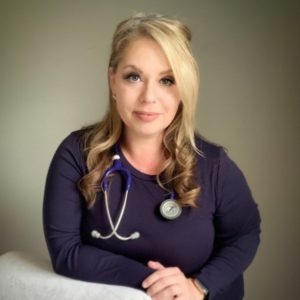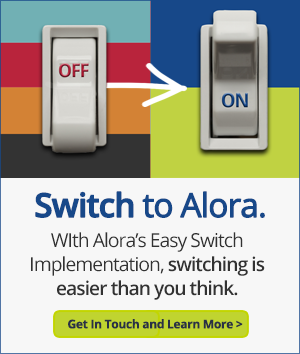
17 Aug OASIS-E IS COMING
How To Get Ready for OASIS-E: Preparing For the Transition
On 02/01/22, CMS released an updated draft of the next OASIS version scheduled for implementation in January 2023. Here are some of the notable changes and how to prepare your staff.
The countdown is on. The Centers for Medicare and Medicaid Services (CMS) will officially retire the Outcomes Assessment Information Set (OASIS) D1 version at the end of the year. Its replacement, the OASIS-E form, is full of changes and new assessment items. As the implementation date draws closer, it’s time for home health agencies to prepare.
Here we will break down the significant updates that home health providers need to know and steps you can take now to get ready for the new OASIS-E home health assessment tool.
Home Health OASIS-E Data Set Updates
Many in the industry are closely following these updates because OASIS accuracy is paramount in home health operations. The standardized OASIS instrument is closely tied to quality measures, data collection, and reimbursement. And don’t forget that OASIS data accounts for one-third of an agency’s performance score and payment under Home Health Value-Based Purchasing (HHVBP).
Here is a brief timeline leading up to the current updates related to the formal release of the home health OASIS-E data set.
- March 18, 2020: CMS announced that the OASIS-E would go into effect in January 2021. Later, they suspended this date due to the COVID-19 Public Health Emergency (PHE).
- December 15, 2021: The finalized 2022 rule reset the new implementation date for OASIS-E on January 1, 2023.
- February 1, 2022: CMS published the most recent draft of the OASIS-E form that Medicare-certified agencies will use beginning January 1, 2023.
- April 20, 2022: At its Open Door Forum, CMS shared that the long-awaited OASIS-E Guidance Manual will be released sometime in early summer 2022.
- May 16, 2022: CMS posted the updated OASIS-E form with the OASIS-E Guidance Manual showing clinicians how to accurately score data items. You can view the changes from the first draft here.
A total of 159 data elements are changing with this new form, including 39 new assessment questions. For an assessment tool already considered challenging for clinicians and administrators, the OASIS-E overhaul demands attention.
Here are some of the notable changes and how to prepare your staff.
OASIS-E Changes
A major change to the OASIS-E that will be obvious right off the bat is a complete revamp of the item sections and numbers. Many will now more closely resemble the assessments in other post-acute care settings.
Currently, each setting uses its own assessment to evaluate patients on admission, discharge, and specified time points.
- Home Health Agencies (HHAs) use the OASIS
- Skilled Nursing Facilities (SNFs) use the Minimum Data Set (MDS)
- Long Term Care Hospitals (LTCHs) use the CARE Data Set (LCDS)
Since the Improving Medicare Post-Acute Care Transformation Act of 2014 (IMPACT Act), enacted on October 6, 2014, CMS has been moving post-acute providers toward a consistent, standardized patient assessment tool for interoperability across settings. As patients flow through the healthcare continuum, an identical data set for patients would be ideal for data collection on quality and safety measures. The OASIS-E version is a big step in that direction.
The OASIS-E version contains several changes to existing assessment questions, including one item that was removed from the form. That one is item M2016, which asks about patient/caregiver drug education intervention. Four other OASIS items were replaced with similar questions. Another update to the OASIS-E revision is a “Patient declines to respond” answer choice for some items.
New OASIS-E Sections
Clinicians completing the OASIS will now see new sections labeled A through Q, rather than only M-, GG-, and J-items. Each letter domain corresponds to a separate part of the assessment. For instance, section “C” includes questions about cognitive status, including mood and behavior patterns. This may confuse clinicians since some questions that were formerly called “M-items” related to cognitive status will move to the “C” section with other mental status questions. Section “M” on OASIS-E will pertain to the skin and Integumentary System.
OASIS-E will introduce home health clinicians to new screening tests and Transfer of Health (TOH) items for completion at specified time points.
OASIS-E Brief Interview Mental Screening (BIMS)
The OASIS-E BIMS assessment items (C0200 – C0500) provide a baseline of cognitive function and temporal orientation. To conduct this screening, clinicians will ask the patients to remember three words such as “sock,” “blue,” and “bed.” Next, they will ask the patient to tell them what year, month, and day it is. Then they will go back to determine if their patient can recall the three words. Points are scored for each question the patient answers correctly. As you might have guessed, this BIMS test is already used in SNFs and inpatient rehabilitation facilities.
OASIS-E Confusion Assessment Method (CAM)
The OASIS-E CAM assessment item (C1310) asks clinicians to assess four features of delirium in a home health patient. These areas include:
- An acute change from baseline
- Inattention
- Disorganized thinking
- Altered level of consciousness
These four features of confusion provide a better picture of the patient at specified OASIS time points.
OASIS-E Transfer of Health (TOH)
The OASIS-E TOH items (A2120 – A2124) ask agencies about transferring the patient’s reconciled medication profile to subsequent providers when there is a transfer of care. These items will eventually be added to the Home Health Quality Reporting Program.
OASIS-E Patient Health Questionnaire-9 (PHQ-9)
On OASIS-E, the depression screening is expanded. M1730 on OASIS-D1 will be replaced by assessment item D0150, which uses the initial PHQ-2. If problems are identified on this two-question assessment, the PHQ-9 should be completed to better demonstrate the home health patient’s depression severity and mood.
With these new additions to the OASIS-E assessment, it is estimated that clinicians will require more time to complete the assessment.
You can see why it is important to start preparing your clinicians now to be familiar with the new assessments and screenings that will be required.
Now is the time for HHAs to start educating staff about the coming changes. Do not wait until the last minute!
Training for Staff on OASIS-E Updates
There are a few ways to get your staff ready for the coming OASIS-E. If you’re wondering how your organization should move forward, consider the following ideas.
A popular and effective method that many agencies use is the Train-the-Trainer model. In this model, HHAs send a few nurses or therapists to intensive conferences or workshops to learn about the updates. Then they return to the agency and train the rest of the staff.
Another method is to invest in training materials that all staff can work through together. Home health consultants offer on-site, virtual, and recorded training sessions for home health companies of all sizes. When looking for OASIS-E training, agencies should trust reputable sources that have offered OASIS training on the C2, D, and D1 versions in the past. These companies will provide thorough training with experienced teachers.
As with any new process or procedure, education must be paired with support. Agencies have to understand that it can take time for clinicians to adjust to the new requirements. Setting clear expectations and helping your staff meet the requirements will increase employee satisfaction and retention through your implementation process.
Tips for Educating HHA Staff on OASIS-E
- Start weekly or bi-weekly updates now! Send out emails, provide handouts or fliers, or give video announcements to prepare staff for the coming changes. These can be as detailed as you want. The key is to send them frequently to keep the momentum going.
- Show staff that you are committed to their growth by emphasizing the training and education that you’re offering. Get them excited to learn something new! Long training sessions can feel daunting. Consider providing lunch and other incentives for staff that complete the training.
- Use real-life examples. In team meetings or care conferences, use specific cases as opportunities to bring up changes that will be coming to admission and transfer assessments.
- Be sure to include all disciplines. Make sure that everyone in the agency is aware of new OASIS-E requirements, not just your nurses. Care should be interdisciplinary, and so should your education program.
Next Steps
Hopefully, this article has provided your agency with practice tips to prepare for the coming OASIS-E. Remember that the OASIS data drives your payment and quality outcomes. So it is critical that your agency get it right when it comes to OASIS-E implementation and training. Now is the time to evaluate your education plan and make sure you are ready for OASIS-E.
Alora will continue to support you with industry updates and tools for success.
CMS has stated that it will release OASIS-E guidance in early summer. Watch the CMS.gov OASIS page for updates.
Share this valuable resource with your team.
Author’s Note: Views, information, and guidance in this resource are intended for information only. We are not rendering legal, financial, accounting, medical, or other professional advice. Alora disclaims any liability to any third party related to this content. We cannot make any guarantee related to the content.
Sources:
“OASIS Data Sets”. cms.gov. Accessed May 11, 2022.
“Outcome Assessment Information Set Version E (OASIS-E)”. cms.gov. Accessed May 11, 2022.
“Train-the-Trainer Model”. Arrowuptraining.com. Accessed May 11, 2022.
Changes to the OASIS-E tool
Here is a list of changes and additions to the upcoming OASIS-E tool.
Section A Demographics
A1005. Ethnicity
A1010. Race
A1110. Language
A1250. Transportation (NACHC ©)
A2120. Provision of Current Reconciled Medication List to Subsequent Provider at Transfer
A2121. Provision of Current Reconciled Medication List to Subsequent Provider at Discharge
A2122 Route of Current Reconciled Medication List Transmission to Subsequent Provider
A2123. Provision of Current Reconciled Medication List to Patient at Discharge
A2124. Route of Current Reconciled Medication List Transmission to Patient
Section B Hearing, Speech, and Vision
B0200. Hearing
B1000. Vision
B1300. Health Literacy (From Creative Commons ©)
Section C Cognitive Patterns
C0100. Should Brief Interview for Mental Status (C0200-C0500) be Conducted? (BIMS)
C0200. Repetition of Three Words
C0300. Temporal Orientation (Orientation to year, month, and day)
C0400. Recall
C0500. BIMS Summary Score
C1310. Signs and Symptoms of Delirium (from CAM©)
Section D Mood
D0150. Patient Mood Interview (PHQ-2 to 9)
D0160. Total Severity Score
D0700. Social Isolation
Section J Pain
J0510. Pain Effect on Sleep
J0520. Pain Interference with Therapy Activities
J0530. Pain Interference with Day-to-Day Activities
Section K Nutrition
K0520. Nutritional Approaches
Section N Medications
N0415. High-Risk Drug Classes: Use and Indication
- Antipsychotic E. Anticoagulant F. Antibiotic H. Opioid I. Antiplatelet J. Hypoglycemic (including insulin)
Section O Treatments and Procedures
O0110. Special Treatments, Procedures, and Programs

Alora can help your agency prepare for OASIS-E implementation. As a part of our committment to our family of agencies, we work with CMS, as well as national and state agencies and associations to keep you informed on the latest regulatory changes in the home health care industry.To learn more about how ALORA partners with agencies for peak clinical performance, productivity, financial success, and compliance, click the link below to

About The Author
Sarah Falcone RN serves as Lead Content Contributor for Alora Healthcare Systems. Sarah is a home health industry consultant, author, blogger, and business development manager with more than 10 years experience working in home health agency administrations. Sarah is also a registered nurse.



No Comments